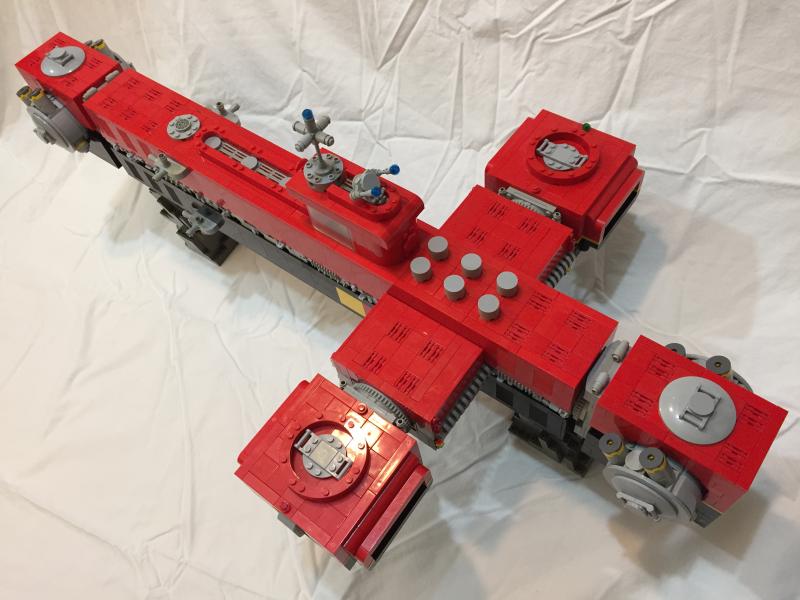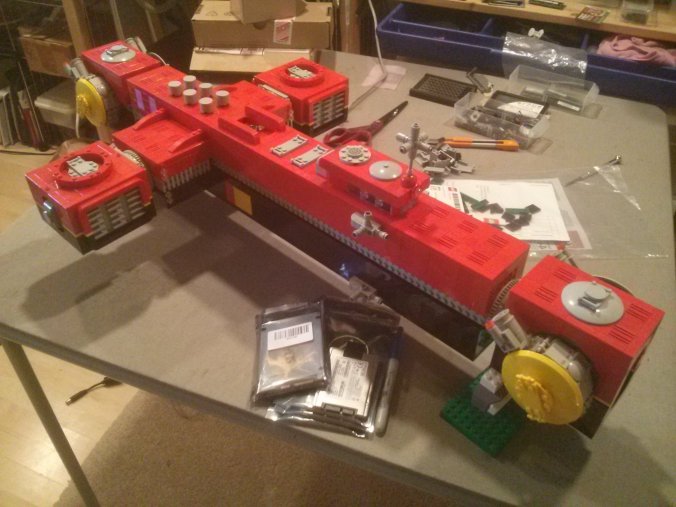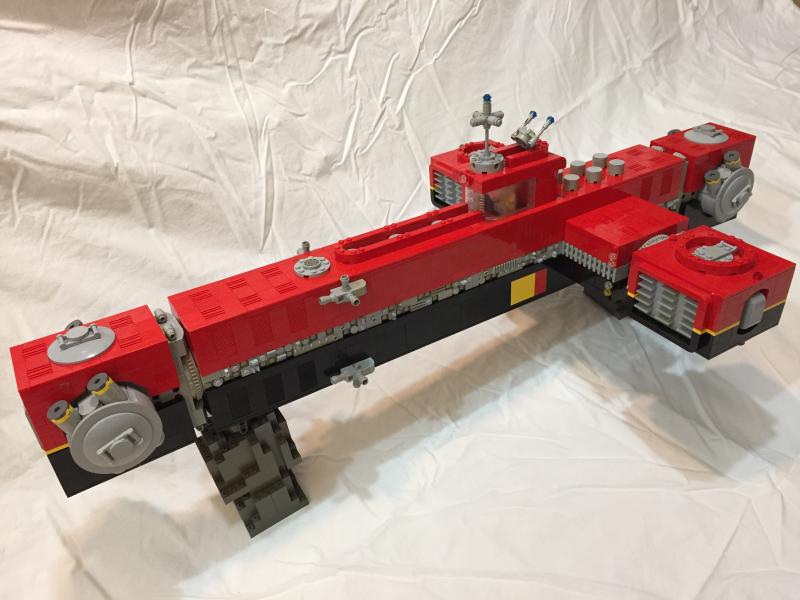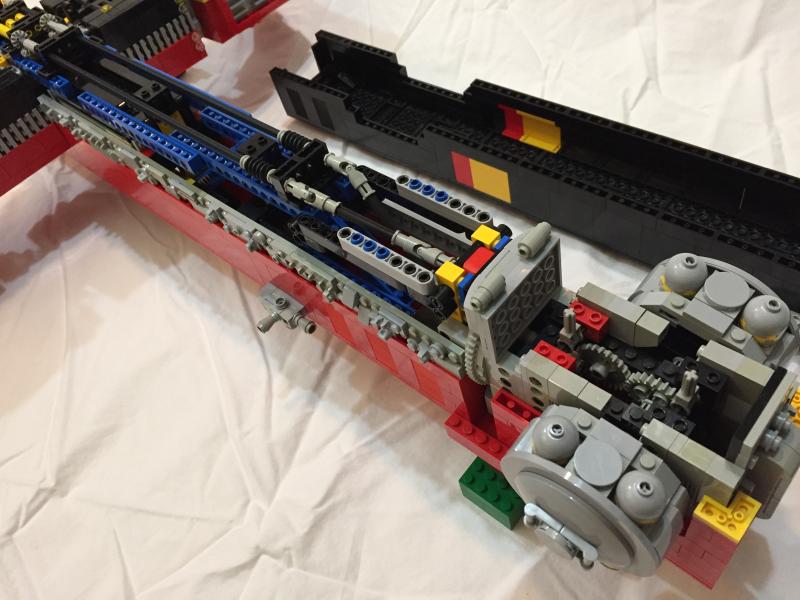
When J and I joined BayLUG there was still a fairly active group of folks building Space MOCs, and the Space theme seemed to be much more popular in the community at large. One of the acronyms thrown around between the space people was SHIP or “Sufficiently Huge Investment in Parts” (I had to look that up), and this typically referred to MOCs (and perhaps not even necessarily Space MOCs) at least 100 studs in length [1].
To young me this was something to strive toward when building a space craft, maybe even above all else, or at least too many other things. It didn’t help that there was a website dedicated to cataloging SHIPs (sadly I don’t remember the name of this site, nor can I tell if it still exists), and anyone could upload pictures of his or her model… provided it met the SHIP criteria!
Of course, young me did not know about BrickLink and had to work with a very limited pool of parts, which meant that my first SHIP, the Springfield, was totally cheating, though it was J who came up with the concept in his Cheater. Under the guise of being “container ships” where the containers simply line the sides of an open frame, these MOCs used very few pieces to reach the 100-stud cutoff, and containers would be a reoccurring theme for many SHIPs to come.
Over the next few years, several SHIPs came and went from the truly bizarre Narusegawa to the MASS-compatible Aoyama and the unfinished, enormous Sakurazaki. After iterating for a few years J and I eventually lost interest, concluding that it was very easy to make SHIPs by spamming MASS modules, but that the resultant ships were very fragile to the point of being difficult to even pick up.
When J and I got out of college and could work on LEGO again, there was a short period of time when I was interested in building Space MOCs again, even though the Space scene had apparently already died down considerably by then. Having previously been more constrained than enabled by our modular standard, I wanted to try building some visually consistent one-piece ships, and this vision resulted in the Maehara and Konoe of 2012.
By this time all of the SHIPs were long gone… except for one.
The 2006 Kagurazaka would survive up to 2014, when I tried to replace (build something similar, but better) her for the third time. The idea was of course to build a large, consistently-styled one-piece ship on the lines of Maehara and Konoe, but the Haruka would also have large movable parts with multiple degrees of freedom and a system of knobs and gears to drive them all. Maybe this was too much, and I lost interest in the project while debugging the cranks with the ship maybe 90% complete.

Thus the Haruka languished for almost five years while I mostly built trains and the occasional not a train. I would occasionally do a little bit of work on the ship, but it wasn’t until earlier this year, after I had mostly run out of trains that I wanted to explore, that I finally decided to spend the time to finish it with the intent of taking it to Bricks by the Bay 2019.

Having been designed in 2014, much of the Haruka is probably not built the way I would do it today, but there are only a few very sketchy bits. Unfortunately the sketchiest bit is probably the gear system used to pivot the turrets and engines, which I tried to improve, but ultimately did not change significantly for the sake of not re-inventing the wheel. In fact, I basically did not change any of the core construction, only some of the body work, most notably the cab and the turrets themselves.

So that’s the story of the Haruka, the latest in a series of SHIPs going back to 2005. Even at exactly 100 studs length, the ship uses more than 3500 pieces and weighs at least a couple kilograms (though I have not weighed it properly). Furthermore due to unconventional construction, structural integrity is poor for what is nominally a one-piece ship, and I don’t even want to start on the cantilevered turntables. Between the impracticality of building such a large MOC and the general demise of the LEGO Space scene, I don’t think I will build another SHIP, and as such the Haruka is also the last.
PS1: I did not spend much time talking about the ship itself as I have made a video about that:
PS2: The name of the ship also goes back to the beginning. All my large LEGO Space ships including the Haruka have been named after characters in Ken Akamatsu’s Love Hina and Negima, both works that strongly influenced my art early on.